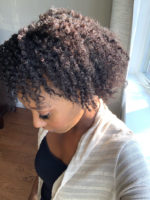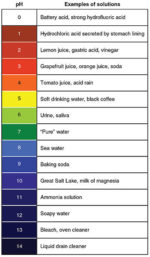Hygral fatigue can be extremely damaging to naturally curly hair. Before we get into how to prevent it, let me explain what it is.
What is Hygral Fatigue
Hygral fatigue is basically moisture overload. The hair cuticle becomes damaged because of excessive moisture entering and leaving the cuticle. The hair strand expands when it’s wet and then contracts after it dries. You’re probably reading this and thinking, duh. This happens after every wash day. But, the key word here is excessive.
You may remember the post I did about pH. To reiterate, human hair naturally has a pH of 4.5 to 5.5. In order to grow healthy hair, you should use products within the 3-6 pH range. It’s all about balance.
Balance is also important when referring to hygral fatigue. If you want to avoid it, limit the length of time your hair is wet. Otherwise, your hair will weaken over time and lead to breakage.
How it Affects Porosity
You’re more likely to experience hygral fatigue, if you have high porosity hair. The open cuticles allow moisture to enter and exit the hair shaft easily. If you have low porosity hair, you’d have a harder time getting hygral fatigue. The closed cuticles make it harder for water to get in and out. That said, knowing how your hair responds to different products is extremely important.
What Causes Hygral Fatigue
Hygral fatigue can result from leaving the conditioner in your hair overnight or sitting too long with conditioning treatment during the day. Hair that is protein deficient (high porosity), or always wet may also cause hygral fatigue. Since low porosity hair type has a high protein content, people with this hair type are less likely to suffer from this condition.
Signs to look for
If you notice that your hair doesn’t stretch as much when wet or doesn’t revert to its natural state after you pull it, then you may have hygral fatigue. Also, look for excess shedding, weak or brittle strands, hair that becomes mushy or gummy when wet.
How to Avoid it
When it comes to fixing the problem, you have to find the right balance between protein and moisture. Even though protein can strengthen your hair, using too much may cause your hair to become brittle.
Try different products, and come up with a wash and condition routine that works for you. Make sure your hair is completely dry. Check labels and pay close attention to the ingredients. You can use products that contain hydrolyzed wheat or soy protein, or quinoa protein.
Pre-pooing is a great way to avoid it as well. When you pre-poo, it allows moisture to penetrate your hair shaft without making hair strands dry and brittle. Use the L.O.C method to help seal the cuticle layer, that includes a leave-in conditioner followed by an oil, and a styling cream. This will stop your hair from contracting after it dries. To reiterate, use products with ph levels between 3 and 6. That is your hair’s safety zone when it comes to pH balance.












